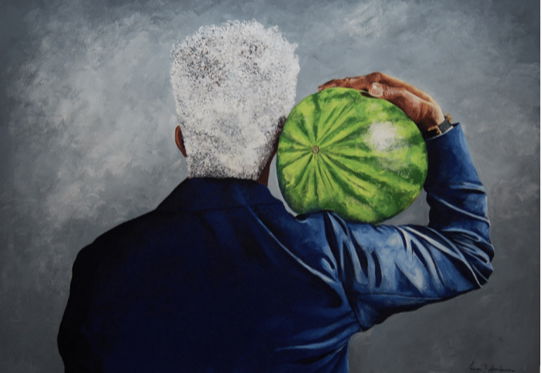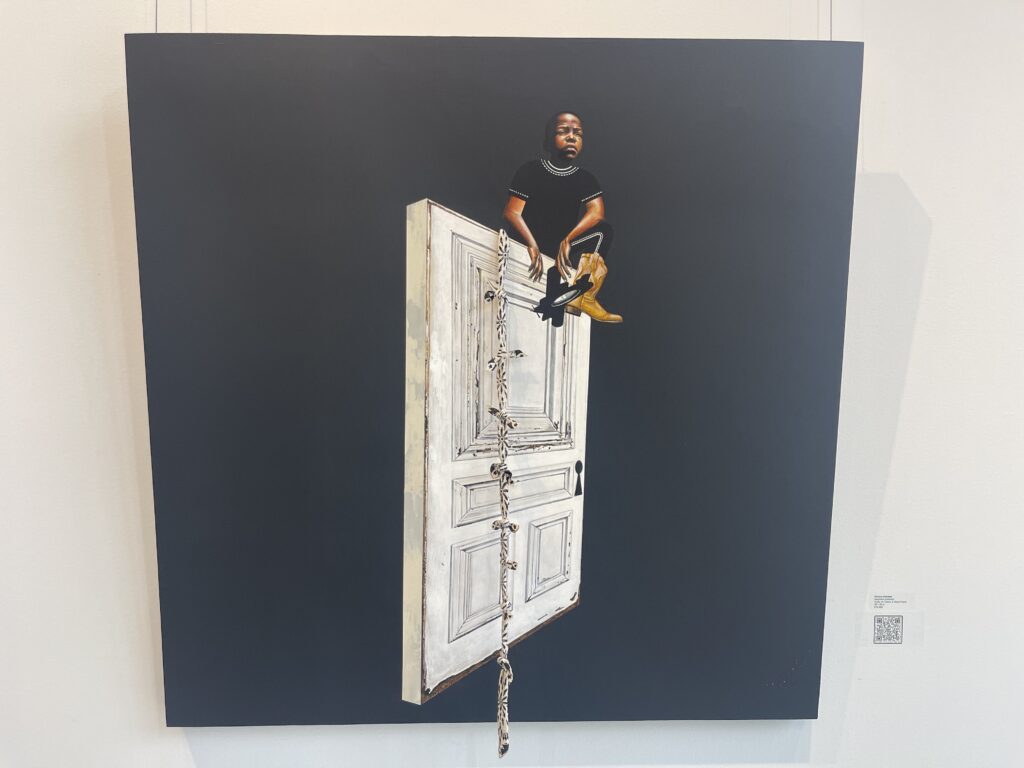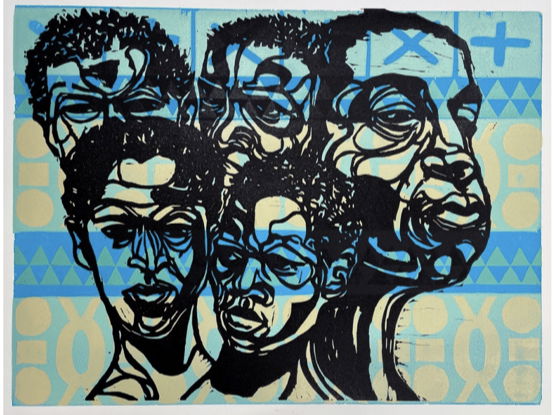
November 4, 2025
Its latest exhibition is Dear Black People: A Love Letter.
Written By Shantay Robinson
Onaje Henderson, one of the three owners of ZuCot Gallery located in Atlanta, thinks that we need to normalize art collecting in the Black community. So, he hosts Art Tastings, an event led by an artist and one of the gallery’s professionals, designed to reduce the intimidation factor of collecting that keeps so many people from going to gallery shows and investing in art.
“For a lot of us, even corporate executives, it’s their first time buying artwork or coming to an art gallery,” Henderson tells BLACK ENTERPRISE of some of his visitors, “So then, how do we make them feel comfortable about these spaces?” Henderson aims to foster a welcoming environment at his gallery for both veteran collectors and novices.
There is a difference between a gallery like ZuCot and blue-chip galleries where you’ll see works by artists like Kehinde Wiley, Kerry James Marshall, and Amy Sherald. Blue-chip galleries focus on artists who are already considered major figures in Western art history, both living and deceased.
These artworks that fetch millions of dollars are a far reach for the first-time art collector who is not willing or able to invest that much into an artwork. A gallery like ZuCot is making itself accessible to a different audience than that of a blue-chip gallery. Though blue-chip galleries may represent some Black artists, they are not focused on the kind of cultural legacy work Henderson is promoting.
Henderson sees collectors as custodians of the culture, able to pass down stories to the next generation. He notes that generations following the baby boomers may be doing better financially, but, in his estimation, older generations did a better job of passing down heirlooms and other things that were important to them, helping their descendants understand who they were. Passing down artworks across generations shares important narratives about collective history with future generations.
For a gallery like ZuCot, the real draw is the narratives the art tells.
“I want to understand what the meaning behind the artwork is and how that ties back into either the personal experience of the artist or the experience of the diaspora,” Henderson says.

Artists Charly Palmer, Jamaal Barber, Horace Imhotep, Georgette Baker, Michael Reese, and Henderson’s father, Aaron Henderson, are featured in the latest exhibition, Dear Black People: A Love Letter.
The exhibition conveys the idea that Black people not only survive hardship but also thrive. This exhibition highlights the importance of remembering. In the face of racism that is now more similar to what the elders experienced, one that is sometimes overt and direct, Black people need to remember who they are. The exhibition invited the artists featured to center Black joy, resilience, beauty, culture, and creativity. The gallery makes clear that the show is not a protest; it’s a proclamation —an “an act of cultural preservation and affirmation.”


The striking artworks, composed of bold colors and dynamic figures, are quite defiant and very much grounded in African American aesthetics that center narratives about the Black experience with race in America. Themes of cultural memory, spirituality, and ancestral connection in the artworks express the many ways Black people have resisted oppressive forces over time.
Charly Palmer’s painting, “Can I Get a Witness,” depicts a crowd of observers witnessing an act in the distance. The style of dress indicates this scene is from a time gone by, as Black women are prominently seen wearing maids’ uniforms. With their arms crossed in front of their chests and the grimaces on their faces, the scene looks all too familiar, sans cell phones.
A more conceptual painting, “Liberty Variant,” by Horace Imhotep, features a bold red background and a dynamic black lightning bolt striking the white Liberty Bell down onto a pile of black ashes. The symbolism is profound, expressing a narrative that tells of the historical subjugation of Black people in America.


ZuCot saw one of its most lucrative moments during COVID. “I think part of that is when people were staying at home, they looked around and said, I don’t have anything on my walls that is a reflection of me,” Henderson says. In our current economy, potential collectors are being more conservative, as collecting art is seen as a luxury.
Henderson says, “We need to support [the arts] because the federal government is giving up so many grants. We now have to support our institutions.”
Collecting art may be most imperative at this moment because of the decrease in government funding allocated for cultural institutions. If we want to see these cultural institutions continue, we have to invest in them.




It’s evident that Henderson is passionate about his work. He left corporate America, where he worked as an engineer, at 29 to join forces with his brother and business partner, both also engineers, to start ZuCot with a mission to serve as an inclusive space for Black collectors. Initially, it started out as work to care for their father and his contemporaries’ artwork because no one else was doing it. So, for about 25 years now, they’ve been normalizing the culture of collecting and challenging companies to live up to their diversity propositions.
In addition to events that groom individual art collectors, the gallery also works with corporate collectors, who claim to believe in diversity, by including Black artists in their collections. They’ve worked with Coca-Cola, Delta Airlines, Home Depot, and numerous other Fortune 500 companies.
“I shouldn’t have to wait on somebody to tell me what’s good for my community. I should be able to say what’s good for me. I think that’s the empowering part of collecting as well,” Henderson says. “All too often, we’re told who the top Black artists are from people who are not in our community. It’s not coming from us, and I think that ownership needs to be back in our hands.”
Dear Black People: A Love Letter will be on view at ZuCot Gallery, 100 Centennial Olympic Park Drive, Atlanta, GA 30313, until mid-November.
RELATED CONTENT: Artist Jennia Fredrique Aponte’s ‘The Clockwork Academy’ Reimagines Black Girls Scholars At Paris Art Week

